Staring down a vast mountain face bleeding into a labyrinth of chutes””some airing into sheer death drops, others into sizable, but not unmakeable, overhangs littered with wind-loaded landing zones””a younger Lance Koudele grips his Polaroid as he cinches down his snowboard bindings. With a snapshot of the mountain before him, he studies the instant print of an open face in reverse, chooses his line and drops in.
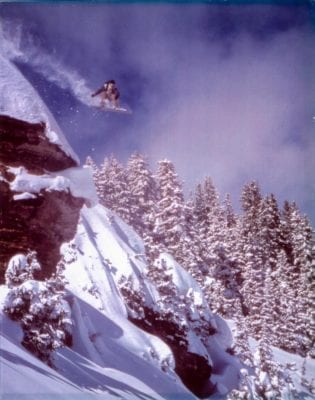
A younger Lance Koudele exploring a career in snowboarding somewhere in the east Vail backcountry circa 1996. // Photo Chris O’Connell
The relationship between athlete and photographer and the utility of the almighty image as a tool are common themes in the evolution of an action sports career. The study of paths along with the waypoints of decision and experience that connect one’s past with the present and setup some unknown future is a dissection worth undertaking that begs the real question: Is it worth bringing a roadmap and to what extent should one follow it?
As a longtime documentarian of the evolution of freestyle kiteboarding in Hood River, Oregon, and a veteran member of the Triple-S media team, Lance Koudele is a force behind the scenes. His work is prominently featured throughout the print and marketing of our sport, and while kiteboarding is just a small blip on a far larger and lucrative portfolio of action sports corporate clients, Lance is known by many in kiteboarding to bring nothing but pure, positive energy and the epitome of stoke into everything he undertakes, including his partner’s latest project, a newly minted coffee roasting company.
In the center of Hood River’s evolving waterfront esplanade is a series of modern mixed-use buildings, and amidst the corporate offices of action lifestyle brands like Dakine is the Koudele’s flagship Stoked Roasters store. Lance is quick to point out that his partner Jax is the powerhouse behind the first coffee shop to venture off Main Street. The Stoked Roasters space features tall ceilings, clean, modern lines and a lineup of espresso from around the world. The back corner boasts a precision roasting machine and a portfolio of Lance’s work, intended to inspire the use of outdoors by every means possible. While Lance’s photography requires a command of technical camera skills and an eye for composition, it is his thorough understanding of boardsports, a connection that only comes from a former athlete, that allows him to capture the story of adventure in motion like he does. As a competitor in the big mountain snowboarding scene in the late 90s, Lance understands the body language of boardsports and uses this to his advantage.
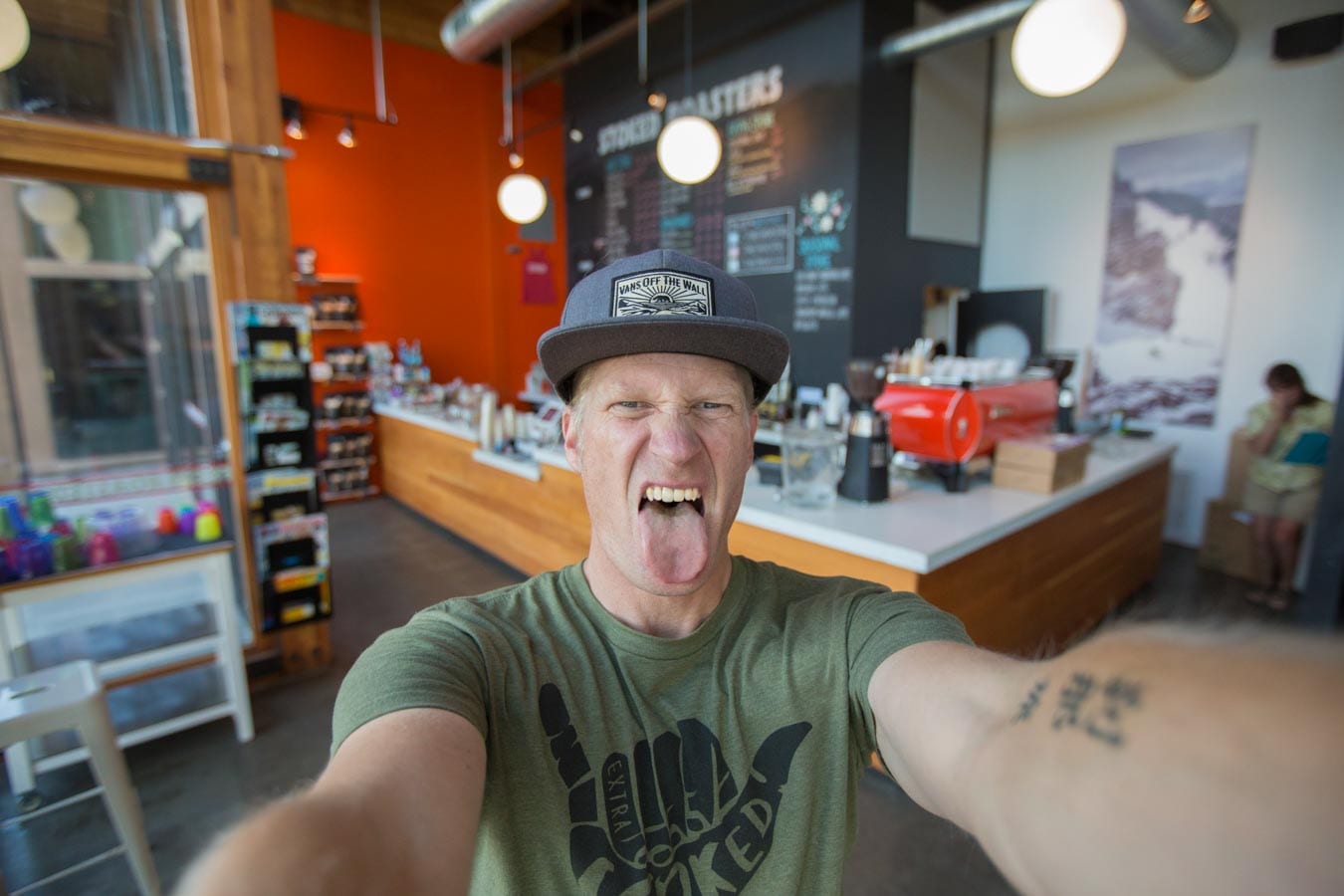
Lance Koudele self-portrait in the Stoked Roasters flagship store on Hood River’s waterfront.
Growing up in Dundee, Oregon, a rural pastoral town proverbially known as the ”˜sticks’ to urbanized Portlanders, Lance was the son of a social worker and banker””both recovering ski bums. Following the family legacy to a school where his mother and older sister both attended, Lance enrolled in the psychology program at Pacific Lutheran University in northern Washington. Recalling that first decision, Lance said, “I was really interested in the performance aspects of athletics”¦ the concept of flow and spirituality are very intertwined for me and I figured [Pacific Lutheran] might have some kind of insight into that.” He’s able to laugh about it now, but the heavy religious doctrine and narrow thinking of a private ecclesiastical institution was far too constricting for Lance’s expansive mind, ready to explore the outer bounds. While he initially intended to transfer out, it was the skiing in the Northern Cascades that helped him finish all four years.
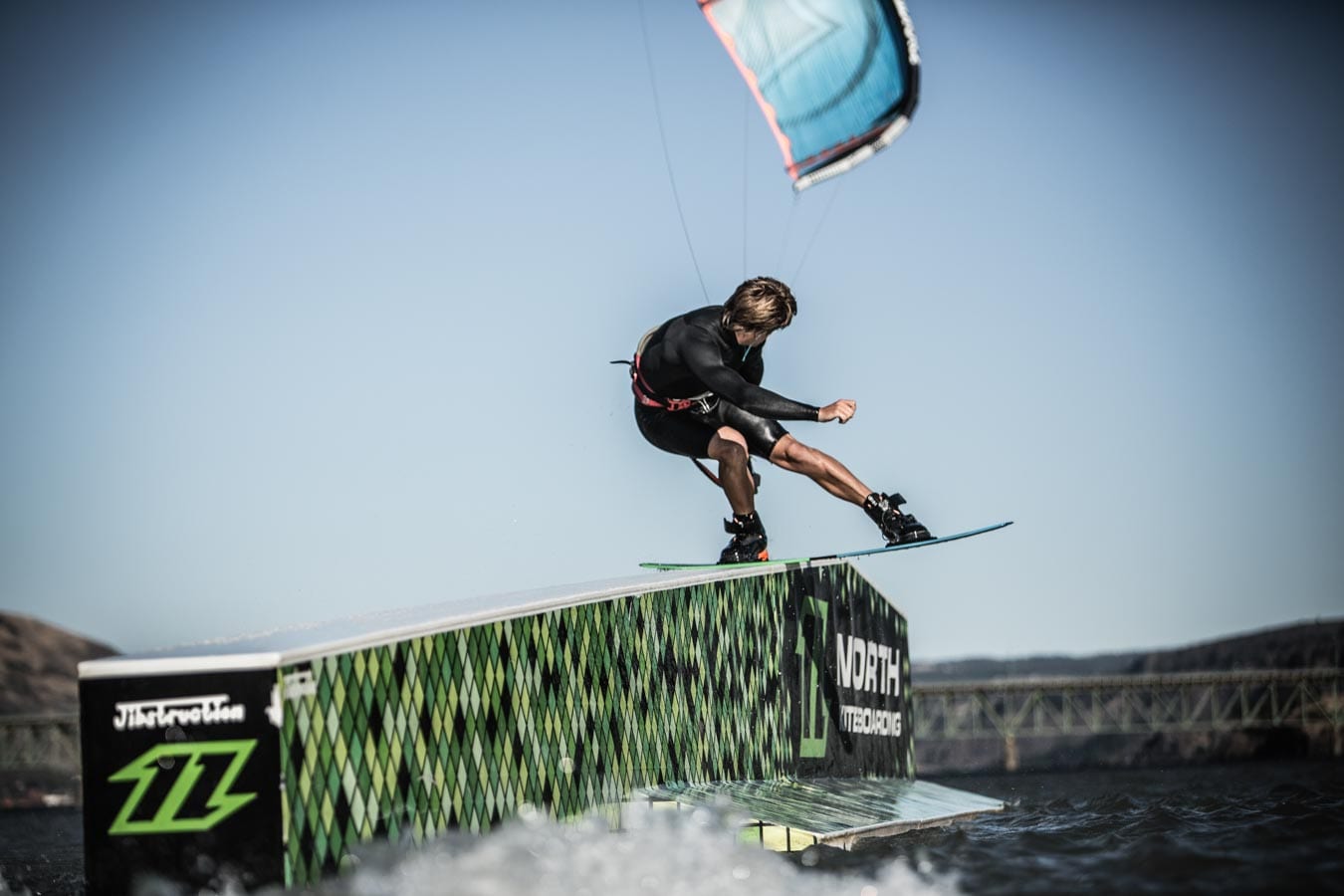
Lance capturing Brandon Scheid at home in the Hood River Slider Park.
Upon the crossroads of graduation, his parents supported his whim to apply for a ski area job in Colorado. Kicking off a quarter life tour of the greater ski towns of North America, Lance bounced from job to job at the best ski hills in the US. While in Vail for a season, Lance won the famed Chinese Downhill which launched him into the world of competitive downhill snowboarding. Growing up with unruly heroes like Glen Plake dominating extreme terrain, Lance laughingly recalls the big mountain mantra, “if you could do a trick, it wasn’t steep enough.”
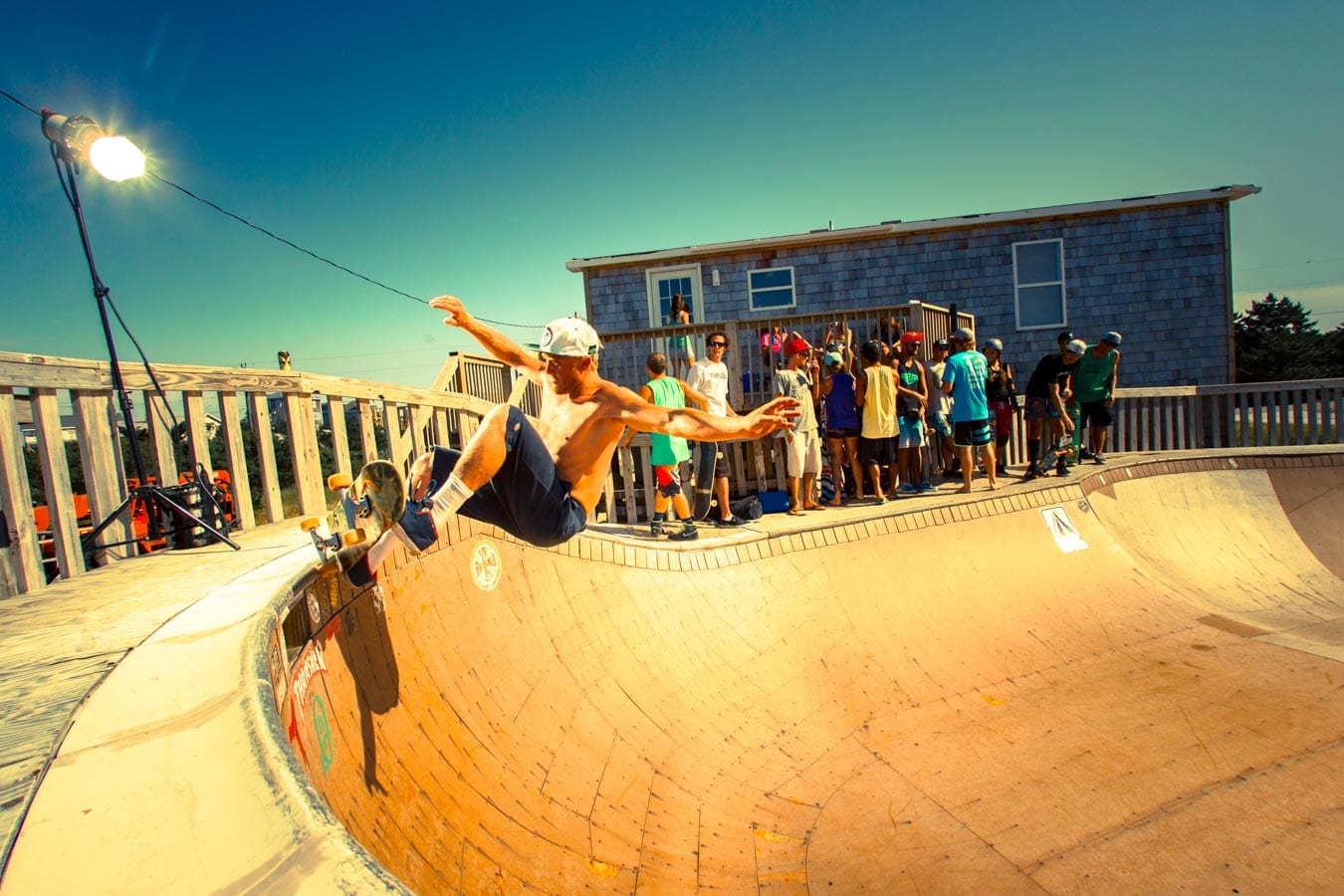
Davey Blair mid grind amidst the Triple-S scene in Jason Slezak’s backyard skate park.
Eventually a series of injuries””a broken shoulder, fingers and the longer task of rebuilding his knees””ended his competitive big mountain aspirations and Lance began to think about a more sustainable career. As an athlete fascinated with video production, Lance enrolled in the Art Institute of Portland. While his passion was storytelling through video, after graduation in 2003, he found greater opportunity in shooting stills. Driving through Hood River, Lance fixated on learning to kiteboard and began working for an agency in town that landed him a number of key photoshoots with outdoor brands like Nike and Smartwool. With a solid work ethic and creative drive, Lance developed strong relationships with large companies like North Face that would allow him to shoot mountain sports in the most spectacular settings around the world. Looking back on his early success, he admits, “it was the agency that gave me the immediate connection to the inside,” but Lance also believes in a larger sense, “If you follow your path, for me it was being outside and being with nature, it’s going to work out somehow.”
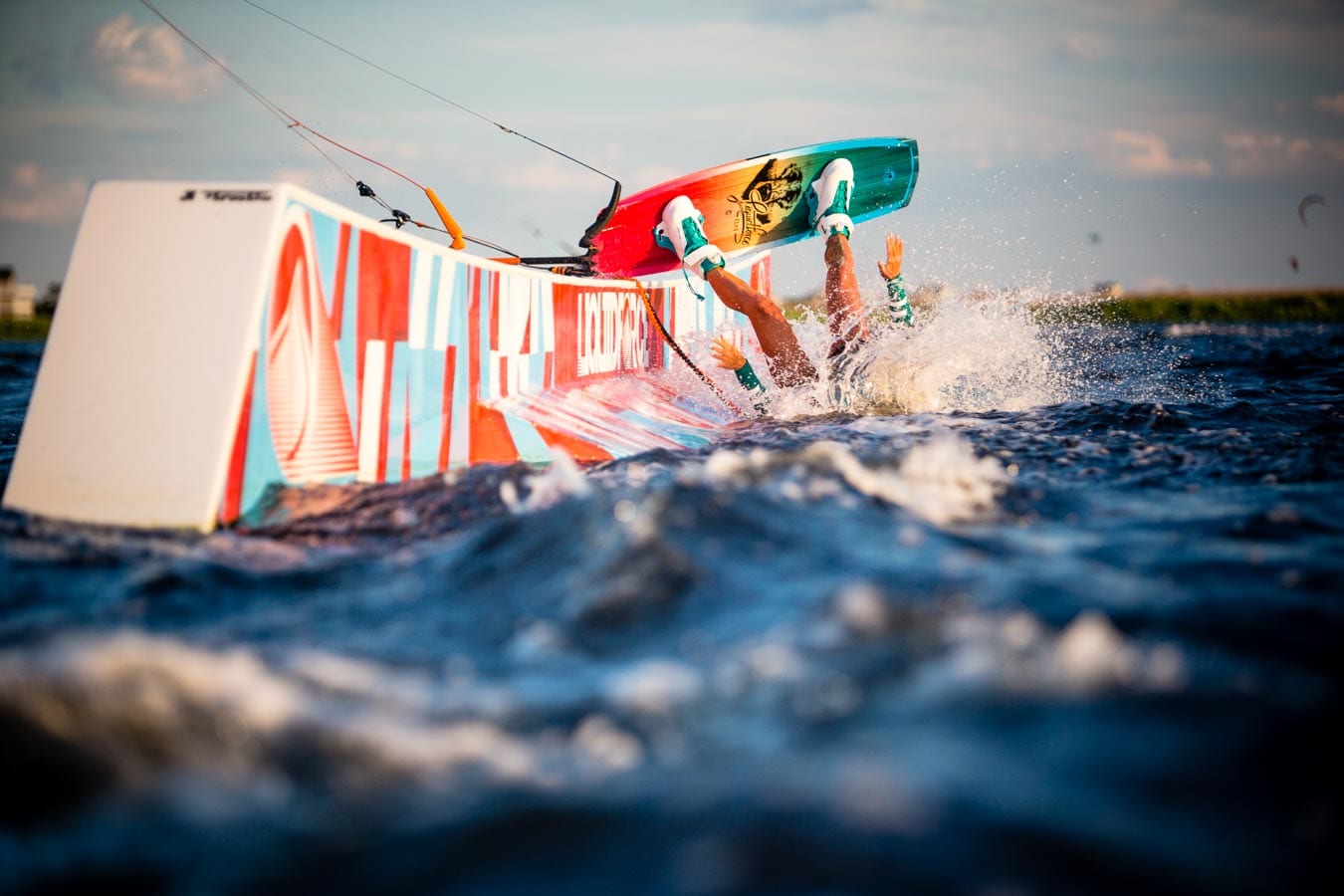
The photographer encounters Sensi Graves in an off moment at the Triple-S in a freeze frame that captures the bizarre intersection of grace in a state of chaos.
Kicked back in a booth against a wall with a thickly pulled shot of caffeine in hand, Lance talks with the unfettered enthusiasm of a motivational speaker in a perma-positive surfer’s drawl. It’s hard not to like Lance’s laid-back, self-effacing humor; he’s at home in Stoked’s entrepreneurial temple that intersects serious coffee culture and legit action sports.
When asked if he ever had any doubts, his answer is honest: “Hell yeah, it’s been feast and famine at times, but that’s the artist way. You have doubt and you have inspiration”” those two things go hand-in-hand””one drives the other. Sometimes you’re not sure about something, but that’s also when creativity happens.” Lance compares freelancing to ”˜swinging from vine-to-vine,’ but also recounts the pressures of growing up, pointing out that living out of your car doesn’t cut it, especially when you’re married. He’s quick to acknowledge that in addition to being creative, the business mind is equally important to pull it all together.
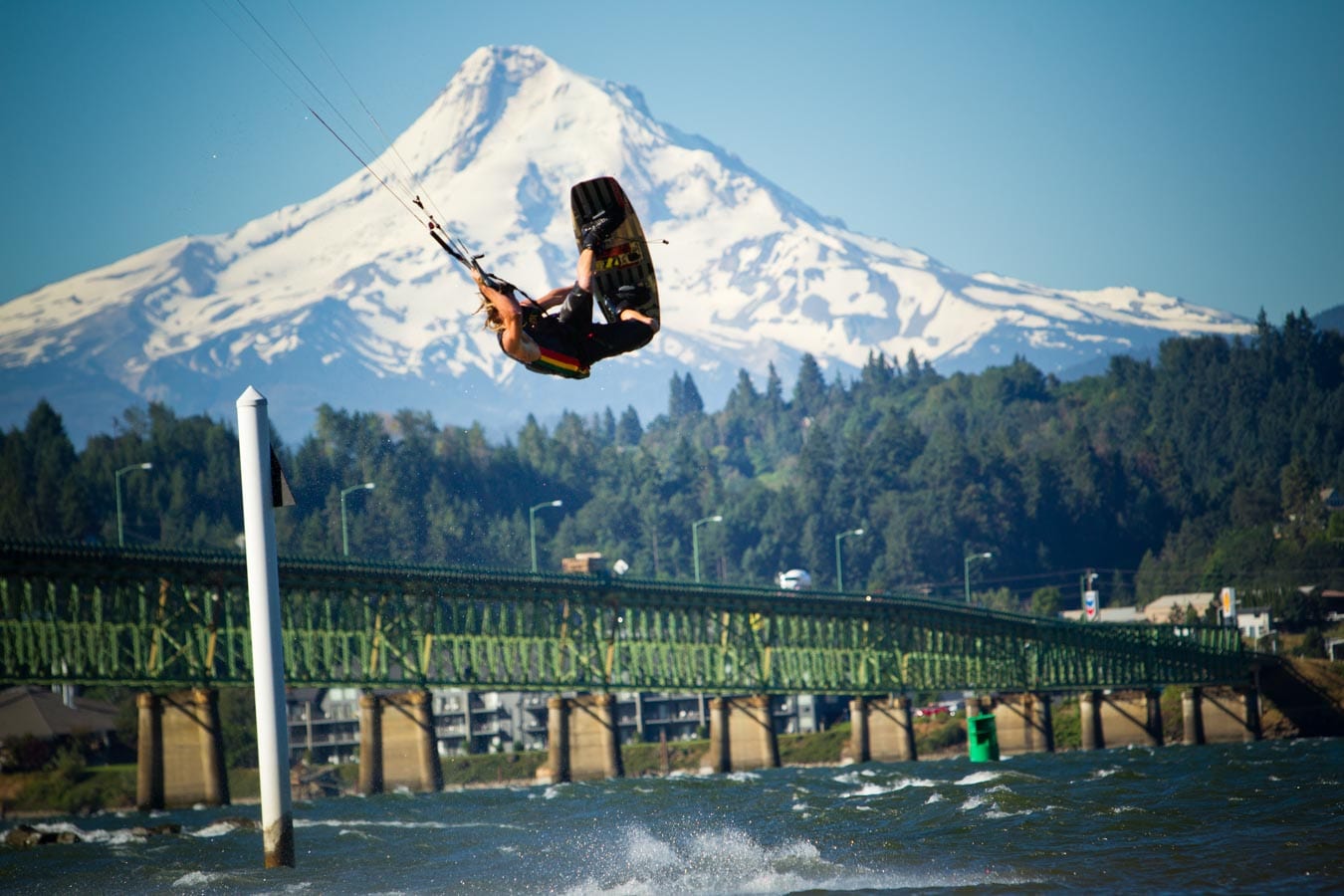
Exploring different angles and compositions, Lance places Eric Rienstra against iconic Mount Hood.
As Lance begins to talk about a subject for which he has true passion, he tends to roll into the metaphysical, perhaps a subtle nod to his days as a psychology student. Lance explains how the connection between photographer and athlete translates into an image and how he believes it carries a vibe beyond just the face of the action. In his words, “The photo is an opportunity for two people to come together to make an image, but when it is really successful, it actually generates a higher level of consciousness.” To Lance, taking photos of action sports is about creating relationships and working with people. “Taking a good photo is easy, but the best work comes out in how you approach the matter. As a professional you connect with someone and bring out something a little more than just a photo””that’s what differentiates what I do from the average person.”
This begins to make more sense once you understand that Lance’s concept of spirituality is rooted in the feeling and sentiment of being outdoors, and the apex of that feeling for Lance is launching off a 30-foot cornice deep within Wyoming’s backcountry. Lance explains, “It comes back to the foundation of what I try to do with all my imagery, which is to create positive change. Lance tries to create images that resonate. “It’s like a communion for like-minded people who love to be outside.”
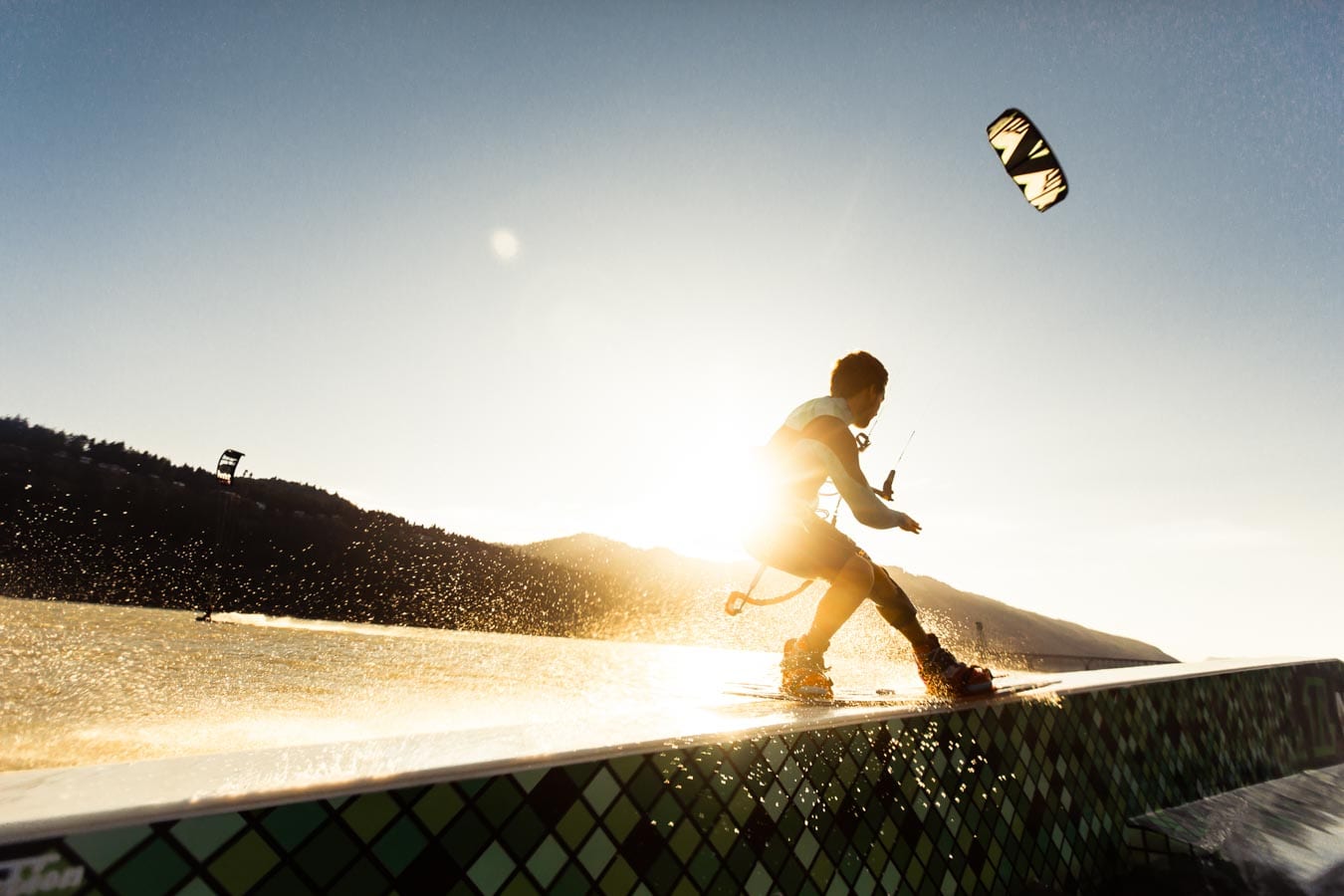
Working with Hood River’s seasonal transients, Lance freeze frames Australia’s Ewan Jaspan under a rare morning light at the Hood River Slider Park.
It’s heavy talk and for those who live in more concrete terms of consciousness, it might be out there, but Lance is a photographer that is concerned about both the physical composition and the emotional, the subconscious message inlaid within his work. Our conversation delves into the future of Stoked Roasters. Lance’s partner just opened another coffee bar in the North Face Store in San Francisco, and a 4×4 sprinter van as well as the assemblage of a formidable army of action sports ambassadors ready to spread the Stoked message is in the works. Lance relays his mock disappointment when Jax confirmed that the new wheels are to be used strictly for distributing coffee at events rather than for Lance’s personal surf mission vehicle. Lance undoubtedly knows physical possessions are inevitable and come with success, but for him, photography is a celebration of something deeper””an endless search for happiness on a greater mission of spreading the gospel of the action sports mountain lifestyle.
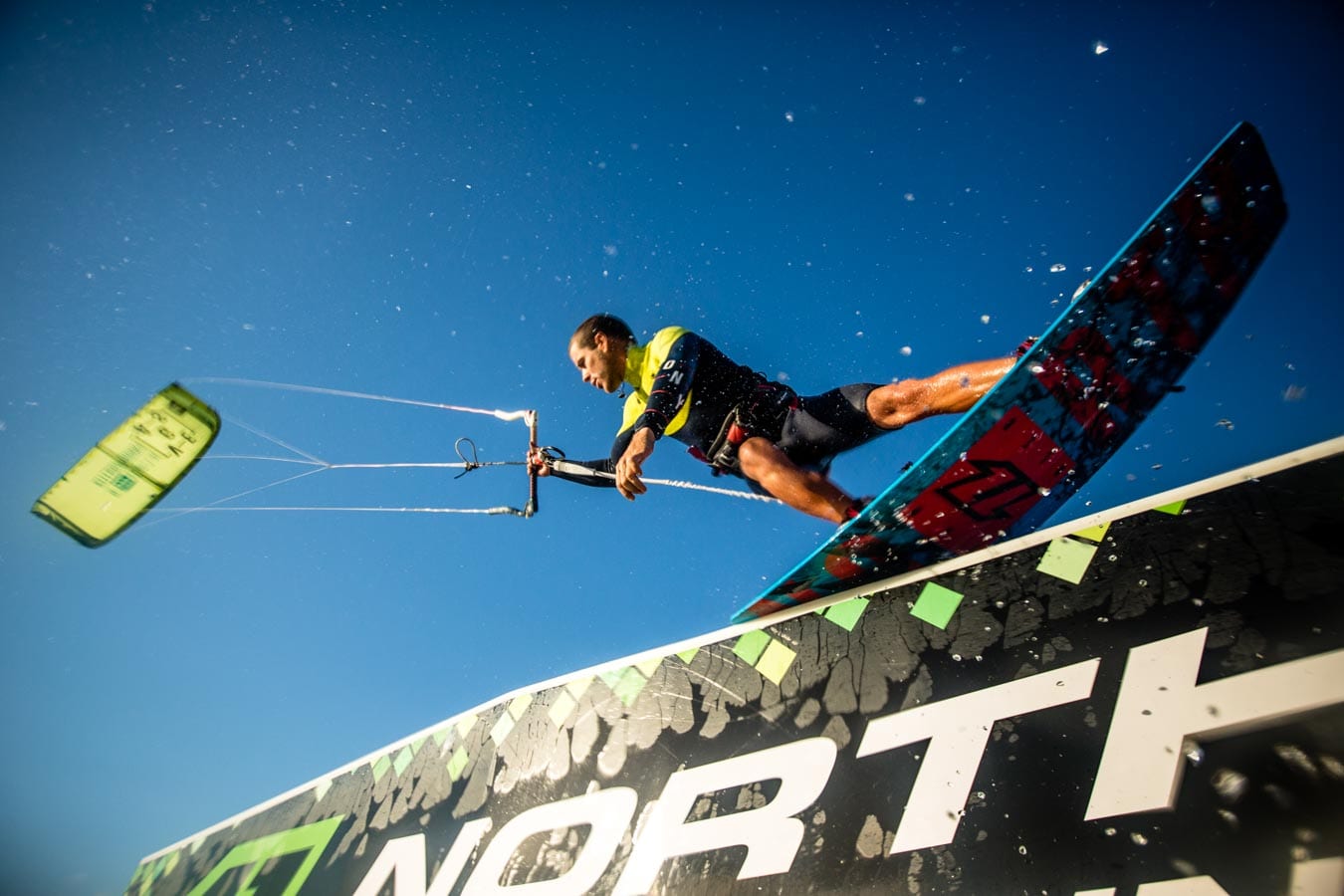
Lance catching Craig Cunningham from an up close and dangerous perspective.
Asking him to reflect on the choices he’s made and the path he has taken, Lance’s best advice for the next generation is to “follow your passion and put off the possessional aspects of life for as long as possible””that’s just a road to unhappiness”” cars and mortgages are just monkeys on your back that demand payment.”
If life came with a Polaroid like the one Lance used to use to scope his downhill lines, an omniscient roadmap for life that could steer us clear of dead ends, fast-track success and get us to our destination with the least amount of blood, sweat and tears””Lance Koudele wouldn’t recommend it””it’s not a story worth telling without a misstep, setback or struggle. In his final words, “Freelance is a great life. You have to hustle, and sometimes you eat Ramen noodles . . . I can cook it up real good.”
This article first appeared in Tkb’s Winter 2016 issue, Vol. 13, No. 4. Want more like this? Subscribe here.


